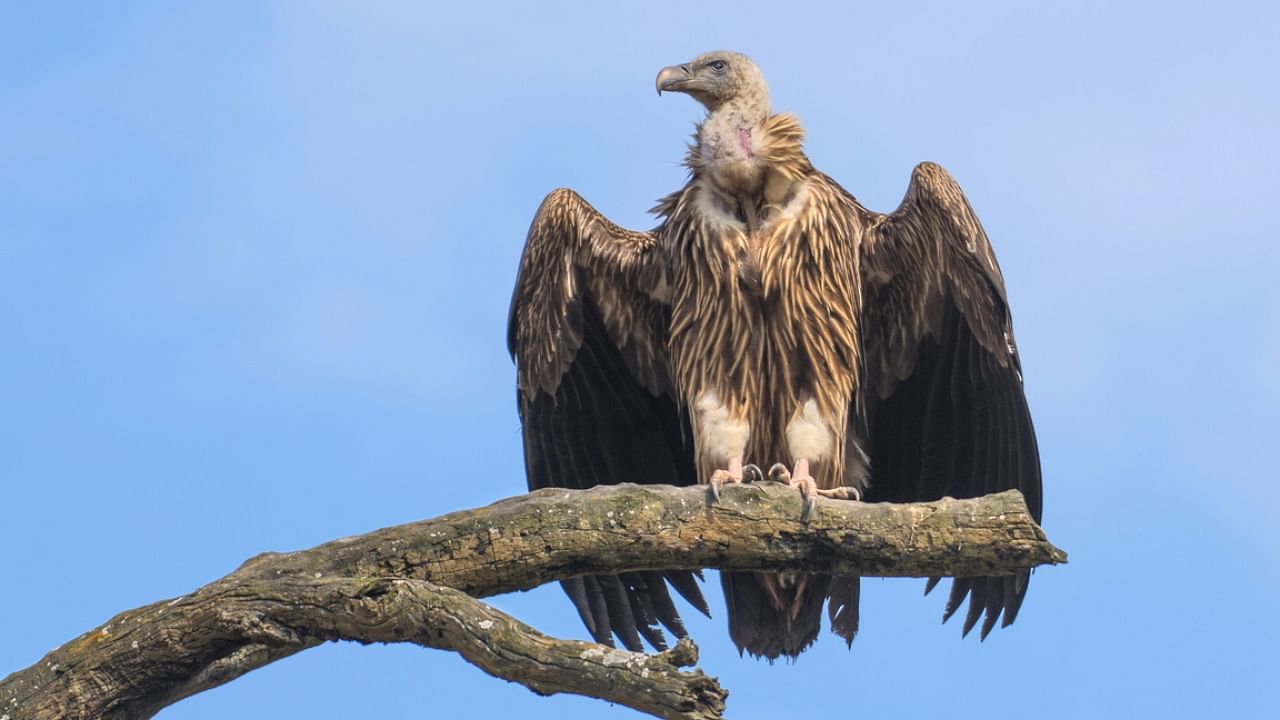
Himalayan vultures are a 'near threatened' bird species. Image for representation only.
Credit: iStock Photo
Mumbai: The vulture conservation work of the Bombay Natural History Society (BNHS) has been praised at the first World Species Congress, hosted by the International Union for Conservation of Nature (IUCN) and the World Association of Zoos and Aquariums (WAZA).
The meeting brought together government representatives, environmental agencies, conservationists, wildlife groups, and students to discuss species conservation issues and chart a “coordinated map of key actions” aimed at species recovery.
The population of Gyps species – White-rumped vulture (Oriental white-backed vulture), Indian vulture (Long-billed vulture), and Slender-billed vulture – crashed during the mid-1990s throughout the Indian sub-continent.
Since then BNHS has been working to save the species from extinction.
The BNHS and Royal Society for Protection of Birds (RSPB) have been managing four Vulture Conservation Breeding Centres (VCBC) across the country in partnership with the Governments of Haryana in Pinjore (2001), West Bengal in Rajabhatkhawa (2005), Assam in Rani, Guwahati (2007), and Madhya Pradesh in Bhopal (2011).
The BNHS is establishing Vulture Safe Zones (VSZs) in Uttar Pradesh, Madhya Pradesh, and Assam besides Vulture Release Zones (VRZs) in Haryana and West Bengal.
“BNHS is making significant progress on various fronts, including the conservation breeding of endangered species. We have successfully raised over 800 vultures at our four captive breeding centres and created more Vulture Safe Zones in India,” BNHS Director Kishor Rithe said.
“We have now received requests from state governments to start breeding red-headed vultures. The Himalayan vulture Gyps himalayensis, the largest vulture species in Asia, breeds at high altitudes in the cold weather of the Himalaya. After leaving the nest, young vultures migrate to the Indian plains for the winter. These winter visitors are falling victim to poison baits and electrocution in their wintering grounds. Seventeen such rescued birds were released in
Assam after treatment by the BNHS Assam team and the Assam Forest Department. Some were later sighted in Bhutan, and IFS officers from Uttarakhand informed us of their presence,” he added.
According to Rithe, BNHS teams have been busy submitting annual reports, receiving positive feedback from Birdlife International on our Vulture Safe Zone study.
“The IUCN World Species Congress also highlighted our pioneering work in vulture conservation breeding and rewilding in Pench and Tadoba, showcasing a video on our efforts,” he added.